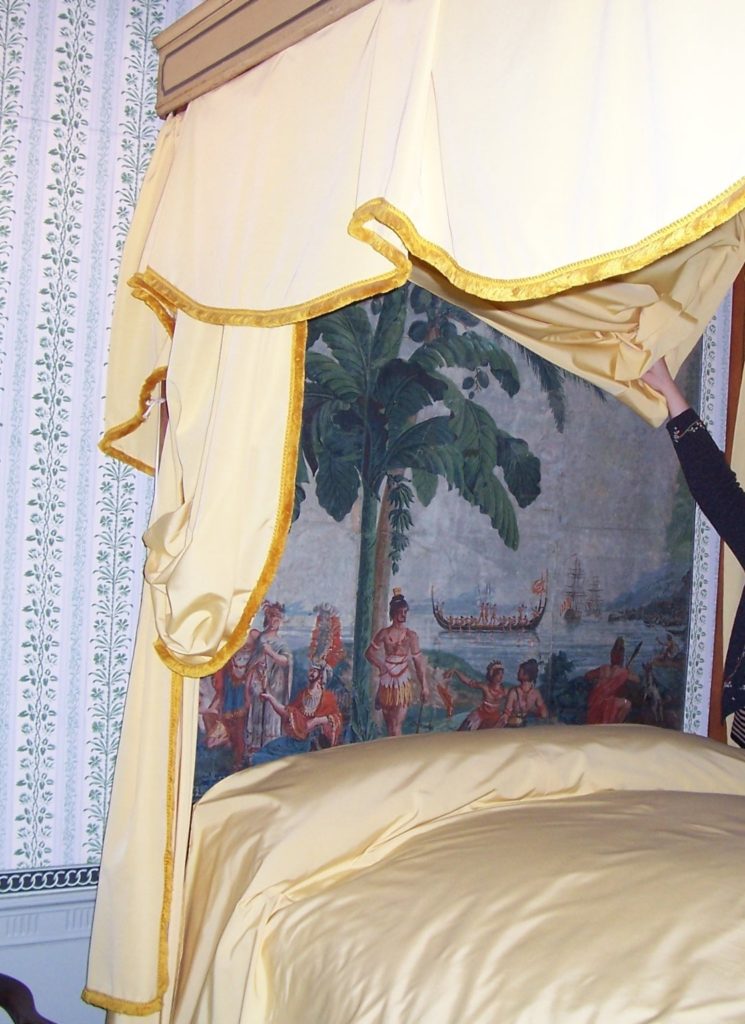 Otis House
Otis House
Sally's bed chamber
A Room of Her Own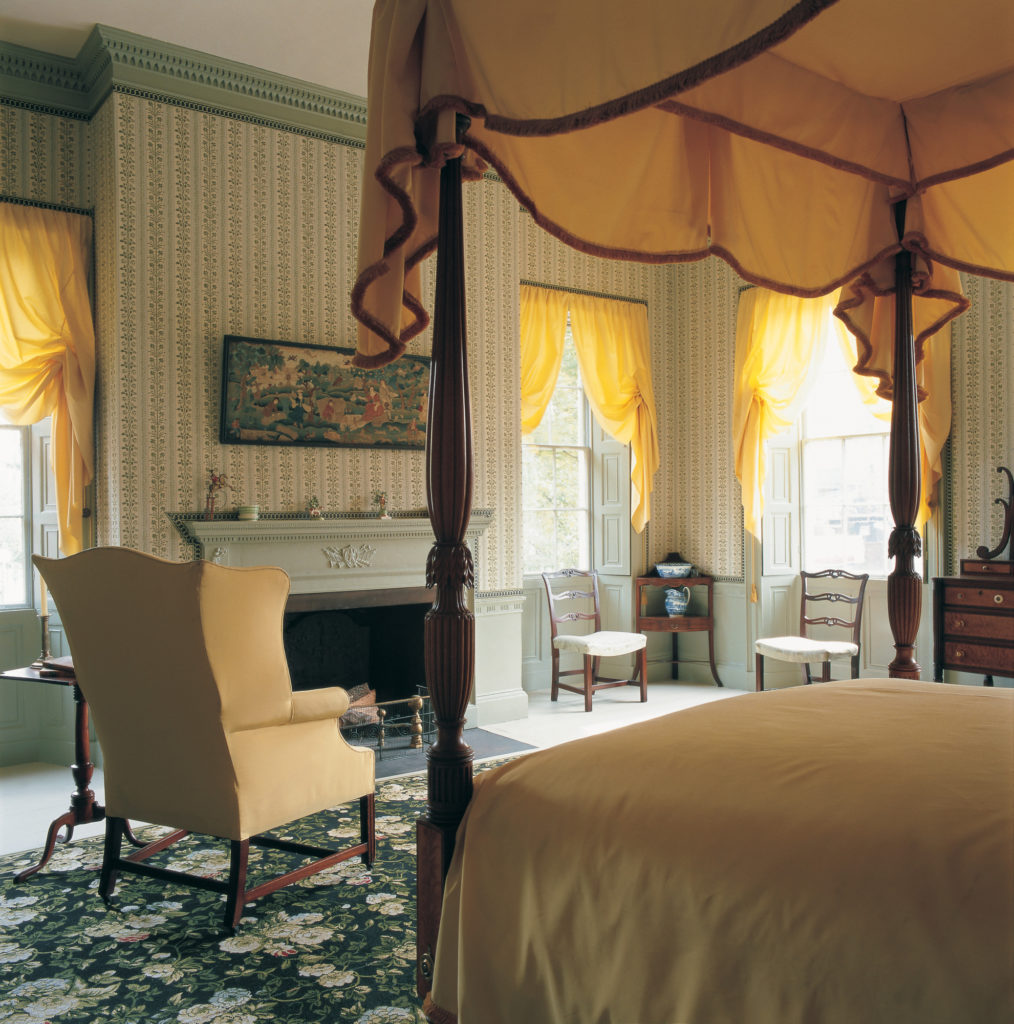
Sally Otis’ front bed chamber was a very comfortable room and was used for both sleeping and washing. The room also served another purpose; during the day, this chamber was used as an informal sitting room, where Mrs. Otis could receive close women friends and relatives for visits, and have meals. There was no indoor plumbing at this time; bedrooms were furnished with washstands and chamber pots. In the backyard there was an outhouse and a well.
Mother, Manager, and Host
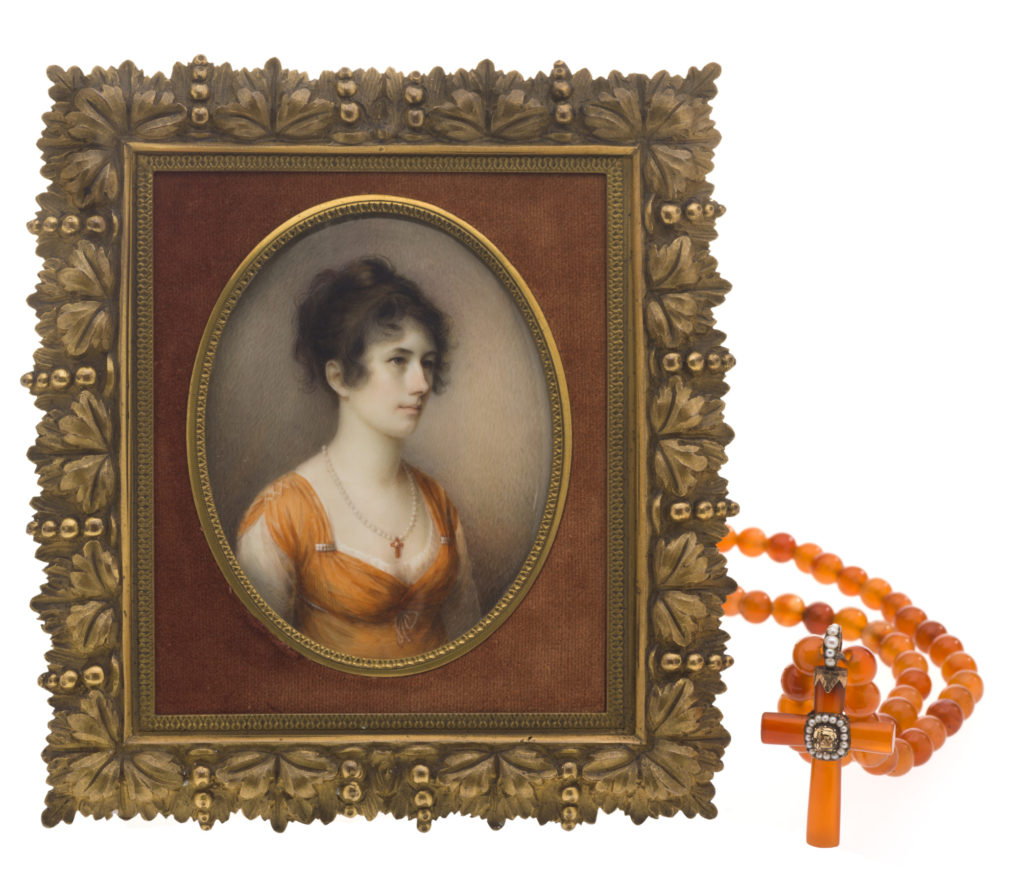 In her 1804 miniature portrait, Sally Foster Otis, wore a carnelian cross on a string of pearls. Renowned for her beauty and sparkling conversation, Mrs. Otis was the toast of Washington and Boston society.
In her 1804 miniature portrait, Sally Foster Otis, wore a carnelian cross on a string of pearls. Renowned for her beauty and sparkling conversation, Mrs. Otis was the toast of Washington and Boston society.
When the Otises moved into the house, they had four children. Sally was 27 and she had already spent 4 ½ years of her life pregnant. She spent another 20 months in pregnancy in the four years they lived in the house. The shortest time between pregnancies appears to be 2 or 3 months, the longest, 5 years 8 months. She gave birth to her first child when she was 21 and her last when she was 40.
Over a period of nineteen years, the Otises would have eleven children, eight living until adulthood. Large families were common in the Federal era, but Sally Otis led a much easier life than most women of the period. The Otises had several servants who took care of the children and the housework, jobs most women had to do for themselves. Sally’s responsibilities included managing her large home, caring for her children, and being a hostess. Because her husband was a public figure and did a lot of entertaining, these were important jobs. Sally seems to have been a natural host—she, like her husband, loved city life and knew how to throw a good party.
Childhood at the Otis House
A Growing Young Family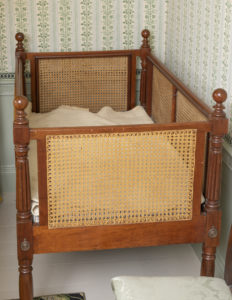
Sally Foster and Harrison Gray Otis were married in 1790 and Sally gave birth to her first child the next year. When the Otises move into the house, they have four children:
Elizabeth, 6
Harrison Gray Jr., 4 ½
Sally, 3 ½
Allyne, 10 months
A daughter, Mary, born in 1795 previously died as an infant and shortly around the time the family moves in, a son, George, also dies as an infant. Their son, Allyne, drowned “almost before Sally’s eyes” in the Back Bay when he was ten years old in 1806.
Harrison was away in Philadelphia tending to congressional business for almost half of each year and although she had servants, Sally spent a great deal of time looking after children in this house, especially with such a young family. In 1797, four Otis children were under seven years old. The Otis children slept on the third floor of the house along with live-in female servants.
If Walls Could Talk
What Lies Beneath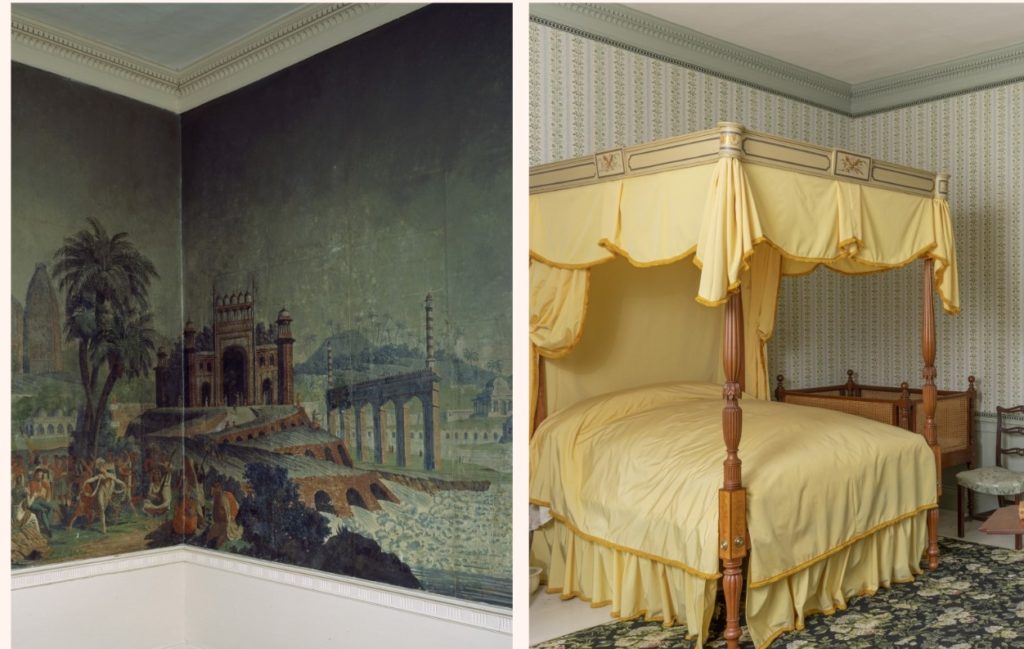
In the 1960s, Sally Otis’s bedchamber was the office of Historic New England president and noted historian Abbott Lowell Cummings. During this period, Historic New England installed a salvaged wallpaper showing idealized views of the Pacific Islands as described by explorer Captain James Cook.
Years later, In order to show a more accurate Otis-era bedchamber, Historic New England covered the scenic wallpaper with a protective wall material and covered it in reproduction wallpaper based on a sample that had been found in the Otis House. This allowed for the preservation of the scenic wallpaper in situ.
Today, lifting the bed hangings at the head of the bed reveals that the scenic wallpaper is still very much intact.
